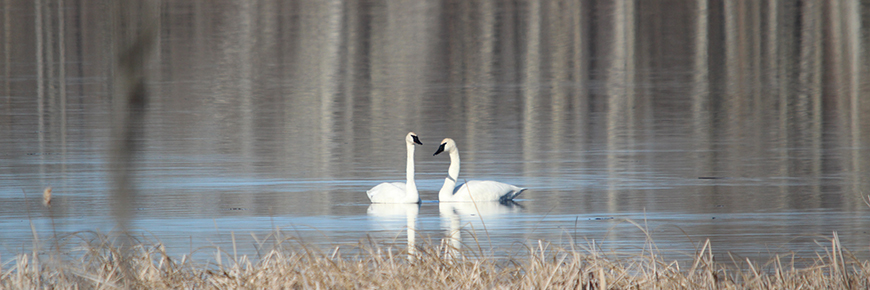
10 species at risk in Riding Mountain National Park
Riding Mountain National Park
Riding Mountain National Park (RMNP) is home to 28 species at risk, though not all are commonly found throughout the park.
So how does a species get listed as “at risk” anyway?
Here’s some background: The Committee on the Status of Endangered Wildlife in Canada (COSEWIC) is made up of government and non-government experts that make recommendations to the Ministry of Environment and Climate Change on the status of species in Canada. The federal cabinet then decides if the species is to be added to the Species at Risk list. Here in Manitoba, a species is evaluated based on its distribution and population size in Manitoba using criteria defined by COSEWIC. As a result, a species may sometimes be listed by one jurisdiction and not the other or under both jurisdictions. It should be noted that Manitoba laws do not apply to federal land, but do however provide valuable insight into how populations of species at risk are doing in the province.
What is the park doing to help the species at risk recover?
Once a species is designated as “at risk”, the park develops a recovery strategy and management plan which includes actions such as preventing habitat loss and reducing human-wildlife conflict.
What can I do to help?
Visitors can report sightings to staff while in Riding Mountain National Park. They can also record their sighting in the iNaturalist app which helps to create a record of sightings in the park. Photos are geotagged and identification is confirmed by experts and the information can be accessed by Parks Canada. Visitors are also encouraged to keep an eye on our website and social media for opportunities to get involved with monitoring programs and other citizen science projects in the park!
The list below includes some of the more common or high-profile species that are found in RMNP:
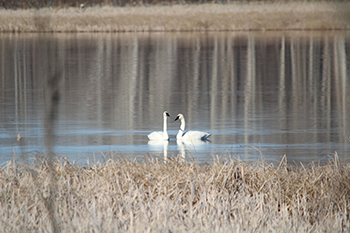
Trumpeter Swan:
Listed provincially as endangered.
The trumpeter swan was extirpated from Manitoba during the fur trade era, but made a comeback in part thanks to protection measures and a successful captive breeding program. RMNP is now home to several breeding pairs.
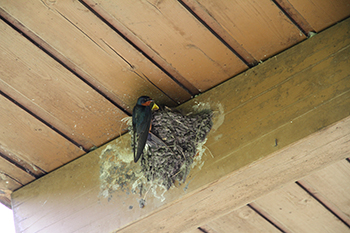
Barn Swallows:
Listed federally as threatened.
Barn swallows are common and wide-spread throughout RMNP but due to population declines across North America, they are listed federally as threatened. Barn swallows rely on human infrastructure to build nests, and as a result human-wildlife conflict has occurred in national parks as a result of their use of kitchen shelters, oTENTiks, and cultural heritage buildings. Parks Canada is working towards reducing this conflict through the use of artificial nesting structures, though their success has yet to be measured.
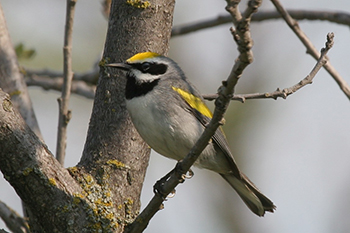
Golden-Winged Warbler:
Listed federally/provincially as threatened.
Major threats to the golden-winged warbler are habitat loss and hybridization with the blue-winged warbler. RMNP was once considered to be a refuge from the risk of hybridization, however recent genetic analysis suggests the number of hybrids in southeastern Manitoba is increasing. RMNP is designated as critical habitat for the golden-winged warbler in the Species at Risk Recovery Strategy.

Red-Headed Woodpeckers:
Listed federally/provincially as threatened.
Red-headed woodpeckers reside in open deciduous forests and shrubland, relying on large, dead trees for both roosting and nesting. The decline in suitable habitat is a leading cause of their population decline across North America. A Species at Risk Recovery Strategy and a description of critical habitat for this species is being drafted and Wasagaming will potentially fall under this designation.
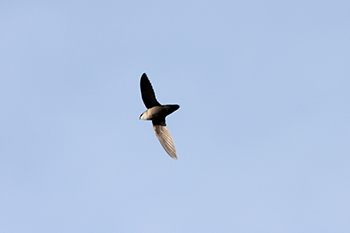
Chimney Swift:
Listed federally/provincially as threatened.
Historically, chimney swifts roosted in the trunks of large, hollow trees but as these types of trees became increasingly rare the species began to rely on brick and stone chimneys. Unfortunately, these structures are also diminishing as advances in heating and venting have made them much less common. Due to habitat loss, the Canadian population of chimney swifts have declined at a rate of 7.8% per year since 1968. In Wasagaming, chimney swifts use the chimney in the Visitor Centre to nest.
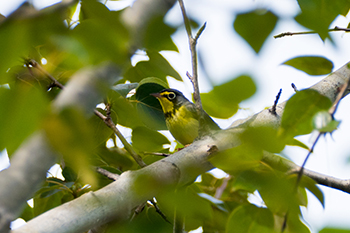
Canada Warblers:
Listed federally/provincially as threatened.
Though not as common in Riding Mountain National Park as other wood warblers, these birds are found along Highway 10 and 19 in mixed-wood forests. The reasons for the decline of this species is currently unknown, however habitat loss/degradation in the wintering grounds are the most likely factors.
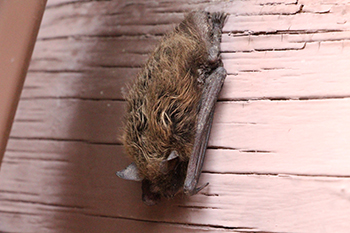
Little Brown Myotis Bats and Northern Long-Eared Myotis Bats:
Listed federally/provincially as endangered.
The biggest threat to these species is the introduction white-nose syndrome (WNS), a fungus native to Europe. The fungus disrupts bats during hibernation, causing them to wake up early and burn valuable fat needed for winter survival, which eventually leads to starvation. WNS was found in the Interlake region of Manitoba in the spring of 2018 and is now present in Riding Mountain National Park. For more information visit our webpage on bats in the park: Bats in Riding Mountain National Park
Both species live in Canada year-round and occupy summer roosts and winter hibernacula. They have been found in park buildings and in bat boxes placed around Wasagaming. The Gatekeeper’s Cottage at the East Gate has been confirmed as a maternity roost and Friends of RMNP is a suspected maternity roost.
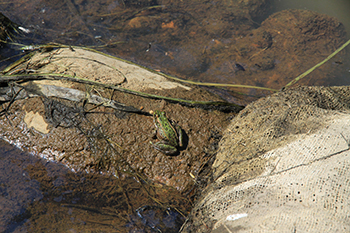
Northern Leopard Frog:
Listed federally as special concern.
Northern leopard frogs have been found in many wetlands along Highway 10 and 19. The major threats to this species is habitat loss and habitat conversion. Originally found both west and south of Lake Winnipeg, the Manitoban range of this species contracted significantly after large die-offs in 1975-76. Local populations appear to have increased but the degree of recovery has not been confirmed.
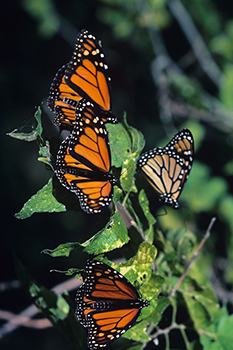
Monarch Butterfly:
The monarch butterfly is currently listed as special concern under the Species at Risk Act, however, this species was reassessed by COSEWIC as Endangered in 2017. It is expected that SARA legal listing will be upgraded to Endangered sometime in 2019.
Monarchs breed exclusively on milkweed plants. Unfortunately, milkweed is becoming increasingly less plentiful due to habitat destruction, which in turn has drastically decreased monarch numbers. Milkweeds are found in a wide variety of habitats including roadsides, meadows, wetlands, and open forests and will likely be designated as critical habitat. A few pockets of milkweed have been identified in the Lake Audy area and along the escarpment on the east side of the park. RMNP will be implementing special precautions when it comes to vegetation maintenance in areas with milkweed present in order to protect this critical habitat.
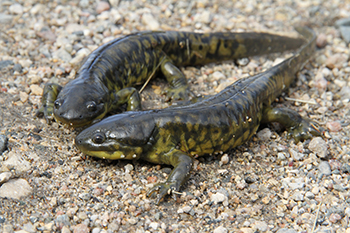
Tiger Salamander:
Listed federally as a species of special concern.
Tiger salamanders can be found in open habitats around the park in grasslands, wetlands, and occasionally cool, fishless lakes. Key habitat features for this species include sandy or crumbly soils surrounding water bodies that lack predatory fish. Breeding habitats must be able to hold water for 3 to 7 months to complete larval development. In winter, the salamanders seek out places where they can burrow into the soil to seek refuge. Although this species remains widely distributed in the prairie provinces, it faces threats such as habitat loss, habitat fragmentation, and disease.
- Date modified :